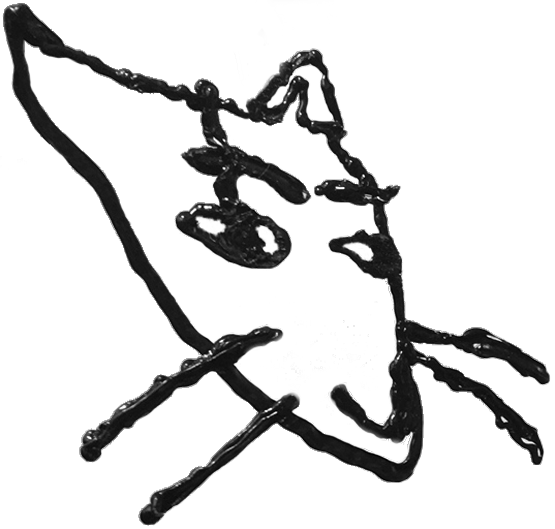It was funny for my friends and family to hear that I, once a devoted atheist and committed liberal, was converting to Catholicism. It was even funnier when I decided to leave the church roughly two weeks after fully converting. I have since joked about making my viral fortune publishing a dramatic “Why I Left the Catholic Church” personal essay to an all-too-sympathetic secular liberal audience eager to have their stereotypes of the old institution reinforced. I’m not exactly going to do that here. I would like to instead spend some time reflecting on a contemporary force in the religion that played a larger role in my conversion than I would like to admit: online Catholicism, specifically “Weird Catholic Twitter.”
To my knowledge, there’s not much of a Weird Baptist Twitter, Weird Mormon Twitter, Weird Evangelical etc.—there is a subreddit called “dankchristianmemes,” but this tends to resemble any online “dank meme stash” in which general and widely relatable references are plugged into popular meme formats.
“Weird Catholic Twitter,” or WCT as its participants refer to it, is something more intense and compelling. On the wider “Catholic Twitter” you will find bitter and substantial theological debates, sometimes involving prominent Catholic academics and commentators. While the “weird” side is no less Catholic and committed in such debates, it is distinguished by its ambiguous and ironic meme-saturated culture. Because of this, it can be difficult to pin down Weird Catholic Twitter posters on any spectrum, whether authentic/ironic or left-wing/right-wing.
The obvious entry point to the weird side of Catholic Twitter is the Woke Space Jesuit, currently on the latest of a series of bans from the platform for antics like telling a fascist that he would “flush him down the toilet.” WSJ is a communist — it says it right there in his bio — but is funny enough, diplomatic enough, or simply strong enough a reference point to command a following across a swath of online Catholics, left-wingers, and otherwise. WSJ is “132% loyal 2” Pope Francis, defends the liberalizing reforms of the Second Vatican Council, and spends a lot of time clowning on internet reactionaries both inside and outside the Church.
A counterpoint to WSJ is Tradical (@NoTrueScotist, currently at 30.7K followers). Tradical is best known for posting saints’ feast days, sacred Renaissance iconography, and medieval church images. As his name might suggest, Tradical— who, it’s worth pointing out, only converted to the Church in the last year or so—also likes to post general “trad” reactionary and anti-liberal talking points (though as a committed trad Catholic ideologue he also disavows overt racism, white nationalism, etc.—after all, these things too are products of corrupt modernity).
The religious ideas on offer were curious enough to grab my attention, but were also presented counter-culturally enough to draw me in. My commitments earlier in life had been to other avant-gardes: punk rock, anarchism, and dada, among others. I had also studied Marx and other radical thought in college. There was something continuous between these interests and WCT.
On WCT, you can riff with WSJ as they dunk on a corny liberal misstep, learn about an obscure Catholic communist group in 70s Italy or about various monarchist movements, and if you feel like, request prayers or spiritual counsel in times of need. The hubris of online evangelicals, liberal protestants, and irritating New Atheists provides plenty of fodder for internet-savvy online Catholic mean boys. WCT affiliates can often be found swarming posts by these types with a meme image of Shrek wearing a fedora—a go-to takedown that reverses the common sense of a liberalizing religious world, with the orthodox believer becoming cool and unbothered while casting the innovators as pushy cretins in a rousing ritual of in-group solidarity. Things can also be colorful and personal; one confident and orthodox academic has a second account dedicated to his weight training logs, complete with videos of >500lb deadlifts.
The Catholic intellectual pedigree even seems to have found some mainstream purchase. Barack Obama himself recommended Catholic “aristopopulist” Patrick Deneen’s book “Why Liberalism Failed” in 2018 for “cogent insights into the loss of meaning and community that many in the West feel.” Last year, mainstream opinion pages covered the discussion between the reactionary intellectual Sohrab Ahmari and “Never Trump” conservative David French, who debated the merits of remaining within or moving beyond American conservatism’s classical liberal tradition. Deneen and Ahmari both joined a host of other reactionary Catholic commentators in signing onto a manifesto condemning even small-l liberalism.
For this group, the elder statesmen and the new online subculture alike, liberalism is itself a kind of cultural malaise which has “failed to retard, much less reverse, the eclipse of permanent truths, family stability, communal solidarity, and much else.” The Catholic avant-garde is unsparing in its criticism of the centrist mainstream. Liberalism has “surrendered to the pornographization of daily life, to the culture of death, to the cult of competitiveness.” It is obsolete, culturally. It cannot account for its own failings; WCT has an answer.
This is a new avant-garde that is able to position itself not only against the secular cultural mainstream but also against the liberal, capitalist, Protestant America. To those of us who grew up in proximity to the mega-church-going, Chick-Fil-A-eating evangelical movement, Catholicism is perhaps always well-poised to intervene aesthetically in its greater remove from our daily secular liberal world. Cathedrals don’t have jumbotrons and its priests grant fewer concessions to the national religion of money-chasing.
Put this way, the church opposed banal mainstream culture the same way punk rock, dadaism, Marxism, etc. had. For me, practicing Catholicism was as exciting as Fluxus – actually even more so, since Happenings and public performance art aesthetics have long since been incorporated into cloyingly sincere viral flash-mob inspiration porn. Dangerous objects on the horizon of the extant cultural landscape are seductive to a system in motion which easily exhausts cultural resources in the search for novelty. At a time when the older avant-gardes come across as tired, co-opted, and insufficient responses to contemporary crises, WCT feels like a true counter-culture.
In saying so, I don’t want to give off the impression that I experienced Catholicism purely as cynical symbolic play, a new language for taunting people I didn’t like, something nice to look at. I mean that the experience of believing in Catholicism — or at least the belief in the transcendental which Catholicism effectively captured for me for a time — itself felt avant-garde.
The kind of belief most commonly practiced today, which can be summarized in the common credo of “spiritual, but not religious”, is all too easily integrated within the rest of boring everyday life. Catholicism felt avant-garde because it constitutes a beautiful disruption. The Transcendent, The Absolute, God, etc. — the Mystery renounced by atheists and left undeveloped and overexploited by vaguely spiritual new agers — here this Beautiful Spirit makes his fragile entrance into life’s banality. Something wonderful is happening, something just beyond the line of sight.
Catholicism announces this and embraces the search for it, promising unrelenting pursuit of that beautiful mystery. Catholicism is a practice, and a deeply rooted and widely available one at that. What other institution has as much history, a history that is so publicly shared, in this churning, ahistorical country? I can hold any kind of esoteric belief I want to in my head, but the materiality of the church and the opportunity to participate in frequent and regular magic rituals with all sorts of otherwise ordinary people was, for me, deepling enticing.
Still, despite all my attempts at participating in this new religion, I nonetheless retained a fundamentally liberal social world and a sense that “online is fake.” I found myself quickly coming up for air after a plunge into Catholicism as a real practice. My contemporary liberal social and political commitments made me very much a stranger in the Church’s world when it came to teachings on gender and sexuality. This, of course, was an issue obvious to everyone in my social world who wasn’t engaged with the esoteric political radicalism and aesthetic avant-garde I was consuming online. In my desire to embrace the ugliness of mass social practice, I overcorrected.
I have since been trying to accomplish a self-criticism that would make sense of the experience. I do believe the seduction of the avant-garde and online counter-culture is not fading anytime soon. Maybe others in my situation and a progressive left operating on this cultural terrain could draw something from my experience. I am still very much in pursuit of the Mystery but have realized that the Catholic church is not where it resides. You always have to strike a balance between the beauty of an ideal and the real, ugly social institutions that put it into practice. My conversion came at a time when I was first beginning to realize this. I wanted to set aside the purism of anarchist politics and esoteric belief that were wonderful in themselves but rarely socially realized. I wanted to see Catholicism as an ugly institution nevertheless penetrated by Holy Mystery. However, it eventually became clear to me that Catholicism was a rigid and cowardly practice (at least if practiced in full accord with Church dogma,) one renunciative of the beauty of the world and its complexity. We are all much too eager to instrumentalize the beautiful Mystery into a set of anxious codes of conduct – this is much easier than sitting with uncertainty. Catholicism was not the exception to this tendency I wanted it to be.
I also think it’s important for leftists to not get too caught up in modernist posturing. YouTuber AngieSpeaks has a very compelling parallel account to this one in which she tries to reconcile occult interests with a leftist movement often associated with unwavering materialist metaphysics. She concludes — and I agree — that we cannot afford to ignore people’s subjective interest in mysterious things. We must necessarily live in constructed social institutions. We cannot get outside of them no matter how much we purify our own internal politics. But we cannot collapse into institutional rigidity that ignores flexibility and the lasting desire to get outside which haunts every structure. This is a question at the heart of all social institutions and one by definition without a universal answer. We are all dreaming, we are all searching for an avant-garde. We should not forget a crucial insight from Catholic theologian Karl Rahner:
“The true system of thought really is the knowledge that humanity is finally directed precisely not toward what it can control in knowledge but toward the absolute mystery as such; that mystery is not just an unfortunate remainder of what is not yet known but rather the blessed goal of knowledge which comes to itself when it is with the incomprehensible One, and not in any other way. With other words, then, the system is [ultimately] the system of what cannot be systematized.”
As the new media landscape explodes the space at the frontier of culture and the all-consuming culture machine captures, processes, and disposes of cultural movements at ever-growing speeds and scales, some of us keep searching for a more novel hyper-avant-garde: some new resource-rich cultural field which has not already been plowed and left fallow, some new mysterious means of getting outside the cages of meaning which have grown boring. And the ever-increasing expansion of culture’s geometric field means we always have more points to which we can oppose ourselves, more enemies to name, more hegemonies to which we can call our opposition, more avant-gardes to inhabit with the satisfaction that we have gotten ahead of someone somewhere. For me, this briefly meant converting to Catholicism. This search leads other young people to other isms. I don’t think this search is necessarily wrong or something to be repressed, and furthermore I don’t think it would be possible to do so anyway. In this process I learned the simple importance of paying attention to what we’re searching for and where it leads us, and which institutions might offer us a piece of it and which lead us further astray.




